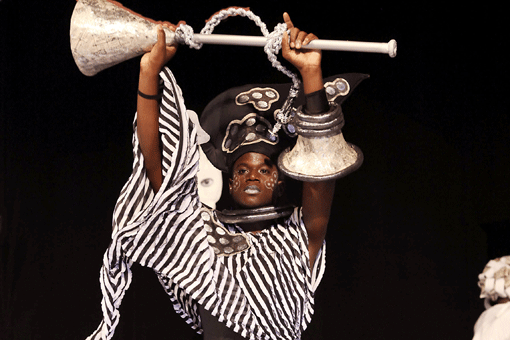In the Caribbean, there’s a popular saying: “When the people of Trinidad and Tobago aren’t celebrating Carnival, they’re preparing for it.” It’s easy to believe when you see just how much planning goes into the month-long holiday, which climaxes with three days of festivities in Port of Spain just before Ash Wednesday (March 6–8 in 2011).
The party starts Monday morning with the J’ouvert (“day’s opening” in West Indies slang) parade. J’ouvert lasts from 4 a.m. to 8 a.m. Partygoers cover themselves in oil, mud or body paint and don costumes with roots in indigenous African and Indian traditions. Some dancers are adorned with spices and birds; others evoke darker themes through incarnations of Satan. Trinidad-based photographer Razor Acosta describes J’ouvert as “the embodiment of freedom and release of the Id.” “In J’ouvert,” Acosta says, “the street is yours. You go where you want, when you want. Every man is equal and allowed to be whatever his heart desires.”
The National Carnival Commission’s (NCC) official events take place on Monday and Tuesday during the day. Carnival “bands”—groups of people dressed in thematic, customized costumes—parade through the streets “playing mas,” the term used to describe dancing in costume to the accompaniment of soca, calypso and steel pan, a native Trinidadian instrument made by hammering down used oil drums. Participants pay about $500 for a costume and the right to “play mas” with their favorite band. Led by a King and Queen, whose costumes are constructed with wire or metal frames and covered in feathers, sequins and papier mâché, the bands converge on the Queen’s Park Savannah, Port of Spain’s largest open space, where they compete for band of the year.
With all the effort put into costume design, it’s no surprise that the spectacle of mas is Carnival’s biggest draw. “Just being a part of the experience is almost a requirement for Trinidadians,” says Trinidad native Levi Jordan.
Although some complain that high costs prohibit people from participating, money won’t be a barrier this year. The Ministry of Arts and Multiculturalism announced in November that it will bring out a “People’s Band” that anyone can join. “Carnival is about people enjoying themselves,” Minister Winston Peters said. “Make a mas face and come.”






